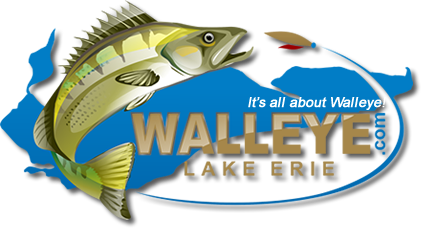 Thanks: 0
Thanks: 0
 Likes: 0
Likes: 0
Results 1 to 10 of 16
Threaded View
-
05-26-2015, 09:31 PM #13

I'm new at this and had similar issues, except I'm trying to learn on big boards. We got skunked Friday afternoon in the Mouse Reef to American Eagle area. We saw lots of marks, but all we caught were large sheephead. We didn't have any problems with knowing we had a junk fish on with those sheephead. They ripped the line out of the release in a somewhat dramatic fashion. On Saturday, we fished southeast of Kellys and did better. We caught seven walleye in about five hours which is actually better than we had ever done before. This weekend was my first time running more than four lines. Prior to this year, we used two planer boards and two lines straight off the back regardless of the number of anglers. On Sunday, we caught 11 in under three hours. I'm convinced we would have hit our three man limit if we would have stayed out longer. We probably could have reached the limit in the three hours if I had detected the white perch and white bass better. The action Sunday was the best I'd ever seen, but I'm inexperienced, so that's not saying much. With big boards, I monitor the rod tips looking for one to be bent more than the others. I also monitor the stretch of the rubber bands that I use to attach the braid line to the planer board release. My board rods are all identical. The lesson I learned this weekend was that if you think you should check a line, DO IT! This applies to the inline boards also. If one of your boards is running differently than the others, check it. There was one point where the middle rod tip was bent more than the others on one side. We got a fish on the other side and I said to myself "check that line once this fish is in the cooler" When I finally turned my attention back to that rod, it was consistent with the other two. I said to myself "looks like whatever it was, it's gone now" Wrong. The reality is all three lines had junk at that point. In fact, one of the lines had two white perch; one each on the two hooks of a worm harness. To be effective, I'm going to have to know my equipment well enough to be able to distinguish between a line with the tackle running normally and a line with junk, or even a line where the tackle isn't running right such as tangled lines, etc. Case in point, we went about an hour where we'd get a walleye on this one line just about as quick as we could get the line out. That line was the only one catching fish and I'm telling my buddy it's too bad that I only have one of those new UV spoons we had on it. After all, if it's the only line catching fish, it must be the ticket right? When it came time to pack up, much to my surprise, all five of the other lines had a white bass or white perch on. We ran like that for at least 45 minutes. We were effectively only fishing with one line. No wonder that one spoon was the only one producing. What's kind of funny is that I want on a charter specifically to learn to troll. I've adopted the captain's system. He spent a lot of time explaining how to monitor the lines and at the time, I didn't think it was important. I still listened, but was dismissing most of what he was saying because the particular day we were out with him, we weren't catching small junk fish. It was either a walleye or sheephead and it didn't seem important. Doing this on my own without an experienced charter captain and experienced first mate is a completely different ball game. I think the biggest key to your success will be to pay close attention to the details and to know your equipment well enough to be able to spot differences
Similar Threads
-
Lost planer board near G Can
By EyeSpy in forum Western Lake Erie Fishing REPORTSReplies: 0Last Post: 07-13-2017, 03:35 AM -
Big Jon Planer Board Masts
By szavodni in forum The Walleye MARKETPLACEReplies: 0Last Post: 06-24-2015, 08:39 PM -
Planer board
By Quinnebogger in forum Western Lake Erie Fishing REPORTSReplies: 2Last Post: 04-09-2012, 06:17 AM -
planer board help
By "chillin" in forum Western Lake Erie Fishing REPORTSReplies: 7Last Post: 06-29-2011, 05:40 AM -
planer board help
By penalty box in forum Western Lake Erie Fishing REPORTSReplies: 17Last Post: 06-13-2011, 08:39 AM










 Reply With Quote
Reply With Quote

Price reduced to $38,800
2012 Ranger 619 fisherman 19 ft